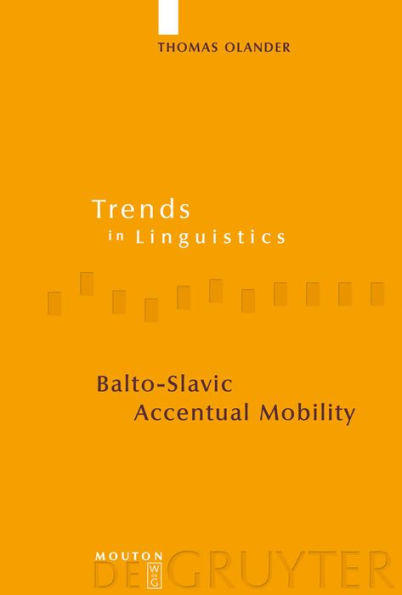The quest for the origin of the so-called "mobile accent paradigms" of Baltic and Slavic leads the reader through other Indo-European language branches such as Indo-Iranian, Greek and Germanic, all of which are relevant to the reconstruction of the Proto-Indo-European accentuation system. After the examination of the evidence for the reconstruction of the Proto-Indo-European accentuation system, focus is moved to the Baltic and Slavic accentuation systems and their relationship to each other and to Proto-Indo-European.
A comprehensive history of research and numerous bibliographical references to earlier pieces of scholarship throughout the book make it a useful tool for anybody who is interested in Balto-Slavic and Indo-European accentology. Written in a simple style and constantly aiming at presenting old and new opinions on the various problems, the volume may serve as an introduction to this complicated field.
The quest for the origin of the so-called "mobile accent paradigms" of Baltic and Slavic leads the reader through other Indo-European language branches such as Indo-Iranian, Greek and Germanic, all of which are relevant to the reconstruction of the Proto-Indo-European accentuation system. After the examination of the evidence for the reconstruction of the Proto-Indo-European accentuation system, focus is moved to the Baltic and Slavic accentuation systems and their relationship to each other and to Proto-Indo-European.
A comprehensive history of research and numerous bibliographical references to earlier pieces of scholarship throughout the book make it a useful tool for anybody who is interested in Balto-Slavic and Indo-European accentology. Written in a simple style and constantly aiming at presenting old and new opinions on the various problems, the volume may serve as an introduction to this complicated field.

Balto-Slavic Accentual Mobility
285
Balto-Slavic Accentual Mobility
285Hardcover

Product Details
| ISBN-13: | 9783110203974 |
|---|---|
| Publisher: | De Gruyter |
| Publication date: | 02/18/2009 |
| Series: | Trends in Linguistics. Studies and Monographs [TiLSM] , #199 |
| Pages: | 285 |
| Product dimensions: | 6.10(w) x 9.06(h) x (d) |
| Age Range: | 18 Years |
